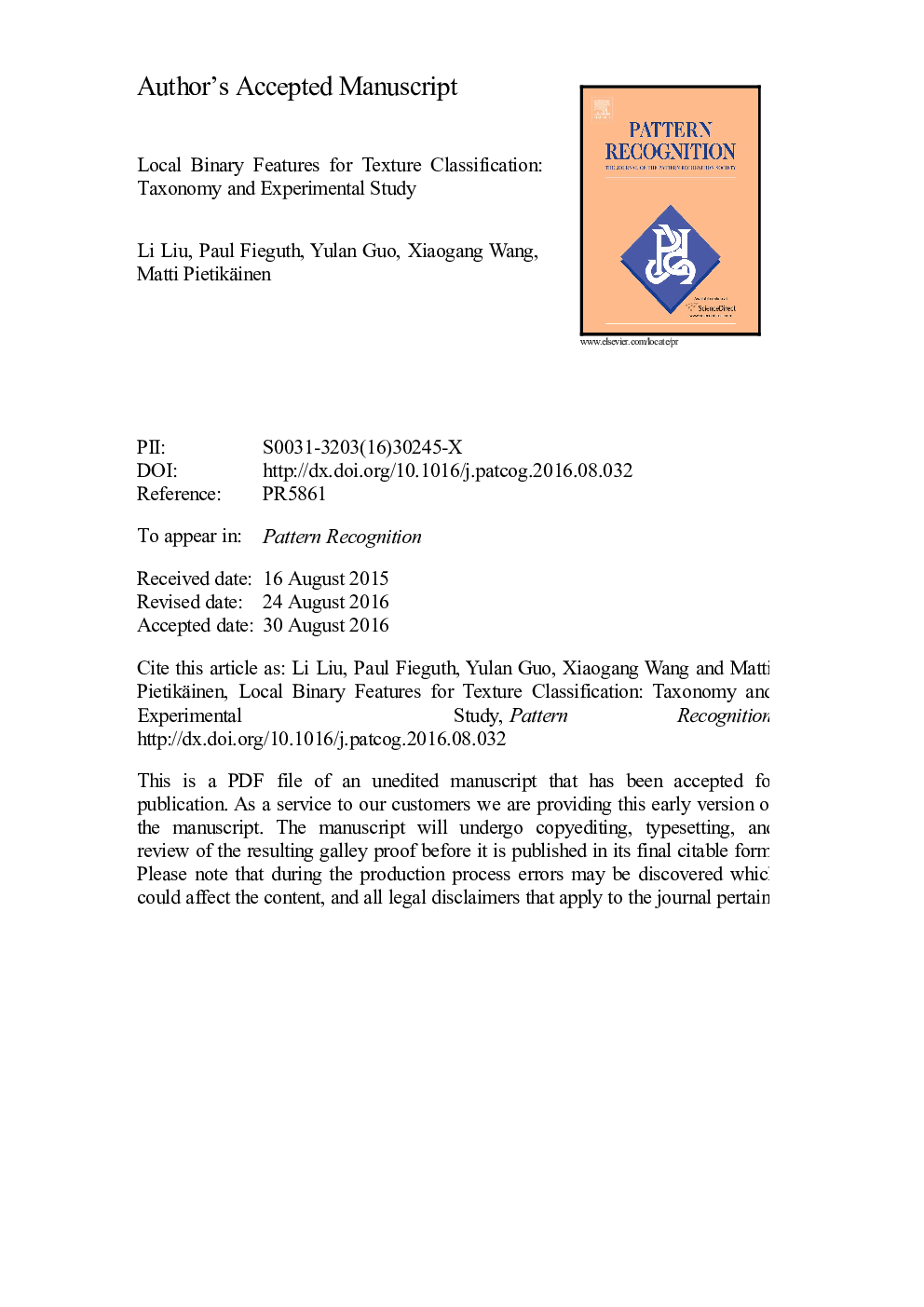| Article ID | Journal | Published Year | Pages | File Type |
|---|---|---|---|---|
| 4969748 | Pattern Recognition | 2017 | 38 Pages |
Abstract
In this paper, we provide a systematic review of current LBP variants and propose a taxonomy to more clearly group the prominent alternatives. Merits and demerits of the various LBP features and their underlying connections are also analyzed. We perform a large scale performance evaluation for texture classification, empirically assessing forty texture features including thirty two recent most promising LBP variants and eight non-LBP descriptors based on deep convolutional networks on thirteen widely-used texture datasets. The experiments are designed to measure their robustness against different classification challenges, including changes in rotation, scale, illumination, viewpoint, number of classes, different types of image degradation, and computational complexity. The best overall performance is obtained for the Median Robust Extended Local Binary Pattern (MRELBP) feature. For textures with very large appearance variations, Fisher vector pooling of deep Convolutional Neural Networks is clearly the best, but at the cost of very high computational complexity. The sensitivity to image degradations and computational complexity are among the key problems for most of the methods considered.
Related Topics
Physical Sciences and Engineering
Computer Science
Computer Vision and Pattern Recognition
Authors
Li Liu, Paul Fieguth, Yulan Guo, Xiaogang Wang, Matti Pietikäinen,
